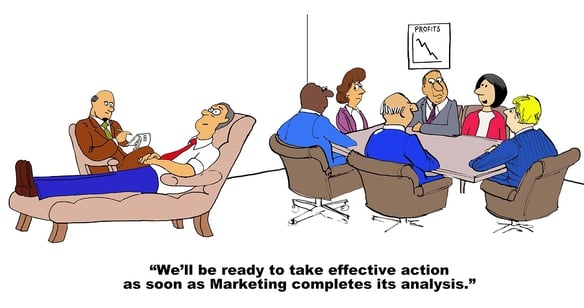
When developing your content strategy, it is vital you understand the path your customers take towards conversion. If you don’t, you’re potentially missing out on countless conversions. Moreover, would you know if your marketing efforts are not in synchronicity with what’s important to your customers? Do you know how to fix it? In this article, I’m going to discuss how you can develop a data-driven customer journey to improve your marketing results and customer experience.
Companies need to move away from traditional means of consumer engagement, to develop consumer-centric strategies that are aligned with what’s important to their customers.
These days, people want to be communicated with on a more personal level. They want to be spoken to in a meaningful way – aligned to their unique interest and online behaviours.
Today, marketers are starting to recognise the importance of data-driven marketing. Yet, new methods of marketing mean it’s essential that you adopt new skills and tools in order to deliver brand consistency and most importantly, results. My question to you is: what are you doing with your data? How are you using it to build customer loyalty and increase your sales? Do you have the right tools to use the data you have in a meaningful, insightful and impactful way?
According to a report by Forbe’s Insights, marketers are embracing data-centric tools that make the most of the information they have. A huge 64% of survey respondents “strongly agree” that data-driven marketing is essential if you want to succeed in the global economy. Furthermore, 67% of respondents suggested they would act on their data-driven audience insights by tailoring creative development to build messages that resonate with niche audience segments. The report also uncovered that the benefits of data-driven customer experiences are widespread. The benefits include:
- Enhance revenue generation
- Accelerating process efficiencies and quality improvements
- Allows organisations to target and optimise specific customers
- Deliver consistent content and brand message across various channels
However, in order to reap the above benefits, it is important to have alignment between people, processes and technology. This includes involving not only your sales and marketing team, but other key members such as; IT, customer service, and operations.
These days, it’s no longer enough to just map your customer journey. In this ever-changing marketing ecosystem, businesses are facing huge competition. That’s why in order to thrive, you must commit to improving the customer experience at each and every touchpoint in the customer journey. Below are some tips to developing a data-driven customer journey for the first time.
1. Collect your data
Your quantitative data comes from each and every one of your customer engagement touchpoints. This includes: websites, apps, advertising, social media and brick-and-mortar stores. One of the challenges you’ll face in collecting data across various channels is that because the data lives in different locations, the data points don’t share a consistent system. You can overcome this problem by investing in software that allows you to pull each of your different data points into one central tool, at TIMCo we use Databox.
Always remember that measuring the success of each channel is crucial to knowing which platforms work, and which ones are wasting your time. If in analysing the data you find one channel isn’t working so well, you can then allocate its budget to a channel that is producing a much better ROI.
It’s important to note that data-driven customer journeys cannot rely on quantitative data lone – you also need qualitative data. Customer journey data analysis require qualitative customer survey data. The data collected from a survey helps you understand the parts of your customers’ journey that you can’t find through quantitative data.
2. Analysing the data
Once you’ve collected your data, it’s time to analyse it. The interesting thing to remember when constructing a map of your customer journey is that the data may challenge your preconceived buyer personas. That’s the beauty of data-driven insight – it shows you things about your customers you may not have realised. It’s important you keep an open mind and trust your data – it’s the most valuable part of customer journey analysis.
3. Optimise and assess
Once you start implementing changes and optimising content, it’s important that you document the changes so you can assess the data’s impact on the customer journey. You’ll need to review data insights regularly, and continually optimise your marketing to improve the customer experience and make sure your marketing is evolving with the ever-changing consumer.


